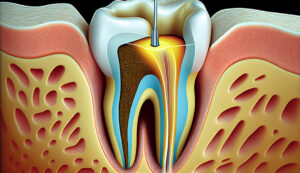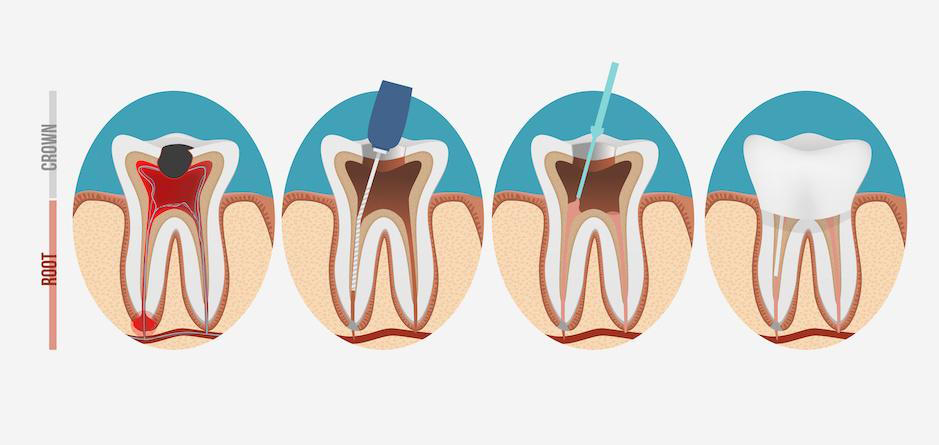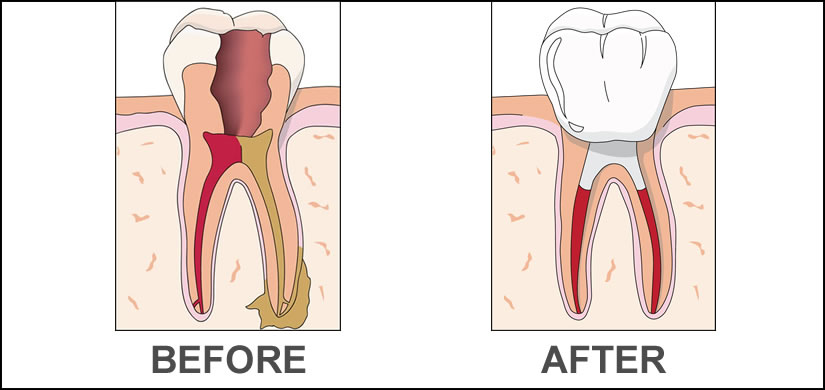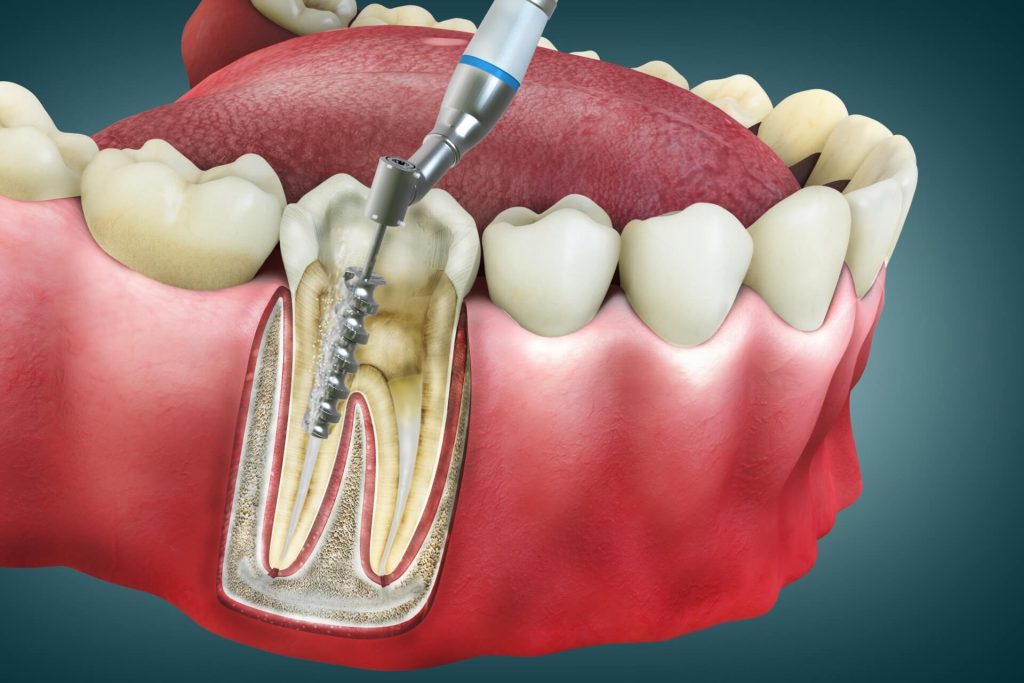
Root Canal Treatment
What Is Root Canal Treatment ?
- Root canal treatment, also known as endodontic therapy, is a dental procedure used to treat infection or damage deep within the tooth’s pulp and root canal system.


Before and After Root Canal Treatment:
Consultation and Diagnosis: You visit the dentist due to symptoms like persistent tooth pain, sensitivity to hot or cold, swelling, or a bump on the gums near the tooth. The dentist examines your tooth and may take X-rays to assess the extent of damage or infection in the pulp and root canals.
Discussion and Treatment Planning: Based on the diagnosis, the dentist discusses the need for root canal treatment to save the tooth. They explain the procedure, its benefits, and address any concerns or questions you may have.
Preparation: If necessary, antibiotics may be prescribed to reduce infection before the procedure. You may also be advised to avoid eating or drinking for a certain period before the appointment, especially if anesthesia will be used.

The treatment for dental implants involves the surgical placement of an implant into the jawbone, where it serves as an anchor for a replacement tooth or bridge. This procedure is highly effective for individuals who have lost teeth due to injury, decay, or periodontal disease.
Diagnosis: The dentist examines the tooth and takes X-rays to determine the extent of infection or damage.
Anesthesia: Local anesthesia is administered to numb the area around the tooth, ensuring comfort during the procedure.
Access: The dentist creates a small opening in the tooth to access the pulp and root canals.
Cleaning and Shaping:
During the cleaning and shaping phase, the dentist removes the infected or damaged pulp, thoroughly cleans and shapes the root canals, and disinfects them to eliminate bacteria and debris.
Filling: After thorough cleaning, the root canals are filled with a biocompatible material (usually gutta-percha) to seal them and prevent future infection.
Restoration: A crown or filling is placed on the tooth to restore its function and protect it from further damage.
After Root Canal Treatment: Immediate Post-Treatment Care:
Discomfort: After the anesthesia wears off, you may feel mild discomfort or sensitivity, typically manageable with over-the-counter pain relievers as advised by your dentist.
Temporary Filling: A temporary filling or crown may be placed on the tooth to protect it until a permanent restoration can be completed.
Instructions: Your dentist provides instructions on how to care for the tooth and manage any discomfort, including oral hygiene practices and dietary restrictions.
Follow-Up Appointments:
Final Restoration: Once the tooth has healed, usually after a few weeks, you return to the dentist for placement of a permanent filling or crown. This restores the tooth’s strength, function, and appearance.
Monitoring: Regular check-ups are scheduled to monitor the tooth’s health and ensure that it has healed properly.
Long-Term Care:
Oral Hygiene:
Maintain optimal oral hygiene by brushing and flossing daily, and scheduling regular dental check-ups.
Avoidance of Trauma: Protect the treated tooth from excessive force or trauma to prevent complications.
Outcome:
Pain Relief:
Crucially, root canal treatment relieves the pain and discomfort caused by an infected or damaged tooth.
Preservation: By saving the natural tooth, root canal treatment helps maintain oral health, function, and aesthetics.

Conclusion for Root Canal Treatment
Root canal treatment is an effective procedure to save a tooth that would otherwise require extraction due to infection or damage. It alleviates pain, preserves natural teeth, and restores oral health and function.
F.A.Q.
Root Canal for Srikanth Dental
With modern techniques and anesthesia, most patients report little to no discomfort during the procedure.
The duration varies based on the tooth’s complexity, but typically, it can be completed in one or two appointments.
Yes, alternatives include tooth extraction followed by a dental implant or bridge, but preserving the natural tooth with root canal treatment is often preferred for maintaining oral health.
Maintain good oral hygiene, visit your dentist regularly for check-ups, and promptly address any dental issues or symptoms like pain or sensitivity.
